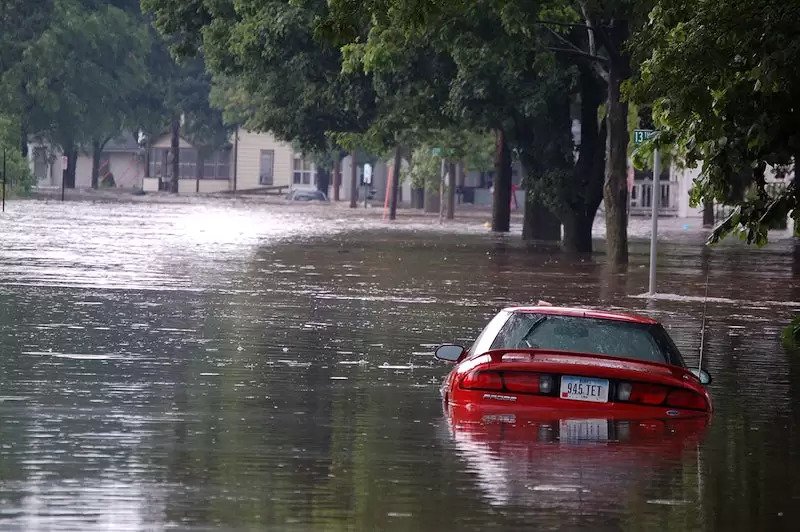In the intricate tapestry of insurance, few policies are as vital yet often misunderstood as flood insurance. As climate patterns shift and extreme weather events become more frequent, the need for a comprehensive understanding of flood insurance has never been greater. In this extensive exploration, we navigate the labyrinthine world of flood insurance, deciphering coverage nuances, and delving into strategies for mitigating flood risks.
Decoding Flood Insurance: Coverage Essentials
Flood insurance is a specialized policy that safeguards homeowners and businesses against the financial repercussions of flooding events. Contrary to common misconceptions, it’s crucial to recognize that typical homeowners’ insurance does not cover flood damage. To grasp the intricacies of flood insurance, one must first understand its key components.
The National Flood Insurance Program (NFIP)
In the United States, the National Flood Insurance Program (NFIP) stands as the cornerstone of flood insurance. Administered by the Federal Emergency Management Agency (FEMA), NFIP offers federally-backed flood insurance to homeowners, renters, and businesses in participating communities. This program serves as a vital safety net, especially for properties located in high-risk flood zones.
Coverage Breakdown
Flood insurance policies are structured to provide coverage for two primary areas:
1. Building Coverage
This component covers the structural elements of a building, including its foundation, walls, floors, and built-in appliances. It also includes essential systems like plumbing, electrical, and HVAC systems. The goal is to ensure that property owners can repair or rebuild their structures in the aftermath of a flood.
2. Contents Coverage
Contents coverage safeguards personal belongings within a structure. This includes items such as furniture, electronics, clothing, and appliances. The objective is to help policyholders replace or repair their possessions that are damaged or destroyed due to flooding.
Limits and Deductibles
Flood insurance policies come with coverage limits and deductibles. It’s essential to understand these terms:
- Coverage Limits: These are the maximum amounts the policy will pay for building and contents damages. Exceeding these limits means the policyholder would need to cover the additional costs themselves.
- Deductibles: Deductibles are the out-of-pocket expenses the policyholder must pay before the insurance coverage kicks in. Higher deductibles can lead to lower premium costs, but it also means more upfront expenses in the event of a flood.
The Flood Risk Landscape: Knowing Your Exposure
To make informed decisions about flood insurance, one must assess their property’s flood risk. Several factors influence this risk, including geographic location, topography, climate patterns, and proximity to water bodies. The FEMA Flood Map Service Center is a valuable resource for evaluating flood zones and potential risks in specific areas.
Flood Zones
FEMA categorizes flood zones based on the level of flood risk. These zones include:
- High-Risk Zones (Special Flood Hazard Areas): Properties in these areas have a higher likelihood of flooding and are often required to have flood insurance if they have federally-backed mortgages.
- Moderate-to-Low-Risk Zones: While the risk is lower in these areas, flooding can still occur. Flood insurance is not usually required by lenders in these zones but is still recommended.
Elevation Certificates
An elevation certificate is a crucial document that provides information about a building’s elevation compared to the base flood elevation. This certificate helps determine flood insurance premiums. Buildings built above the base flood elevation typically receive lower premiums.
Mitigating Flood Risks: Strategies for Resilience
Beyond securing flood insurance, there are proactive steps that property owners can take to mitigate flood risks and enhance their resilience in the face of potential flooding events.
1. Elevate Structures
Raising a building’s elevation above the base flood level is a highly effective mitigation strategy. This reduces the risk of flood damage and can lead to lower insurance premiums.
2. Floodproofing
Floodproofing involves implementing structural modifications to a building to prevent or reduce flood damage. This can include installing flood barriers, waterproofing foundations, and sealing walls.
3. Drainage Improvements
Ensuring proper drainage around a property can help divert water away from buildings. This may involve grading the land, installing sump pumps, or creating swales.
4. Flood-Resistant Materials
Using flood-resistant materials in construction, such as water-resistant drywall and metal studs, can reduce the extent of flood damage.
5. Community Participation
Engaging with local community initiatives and floodplain management programs can provide valuable information and resources for flood mitigation.
The Cost of Inaction
Understanding the costs associated with flood damage underscores the importance of flood insurance and mitigation efforts. Floods can lead to devastating financial consequences, including:
- Property Damage: Floodwaters can cause extensive damage to structures and contents, often requiring costly repairs or replacements.
- Displacement Costs: Temporary housing and relocation expenses can add to the financial burden.
- Loss of Income: For businesses, floods can result in business interruption and income loss.
- Increased Insurance Costs: Repeated flood damage can lead to higher insurance premiums or policy cancellations.
Flood Insurance Myths and Realities
Several myths surround flood insurance, which can lead to misconceptions and inadequate coverage. Let’s dispel some common myths:
Myth: I Don’t Need Flood Insurance Because I’m Not in a High-Risk Area.
Reality: Flooding can occur anywhere, and many flood insurance claims come from properties outside high-risk zones.
Myth: My Homeowner’s Insurance Covers Flood Damage.
Reality: Typical homeowner’s insurance policies do not cover flood damage. A separate flood insurance policy is necessary.
Myth: Flood Insurance is Only for Homeowners.
Reality: Flood insurance is available to homeowners, renters, and businesses. Anyone can benefit from flood coverage.
In Conclusion
In a world increasingly marked by climate unpredictability, flood insurance stands as a crucial shield against the financial devastation that flooding can bring. By understanding the intricacies of flood insurance, evaluating flood risks, and implementing mitigation strategies, property owners can fortify their resilience in the face of nature’s unpredictable forces. In this ongoing battle against flood-related losses, knowledge and preparedness are the greatest assets, ensuring that when the waters recede, the path to recovery is not only possible but also financially viable.


